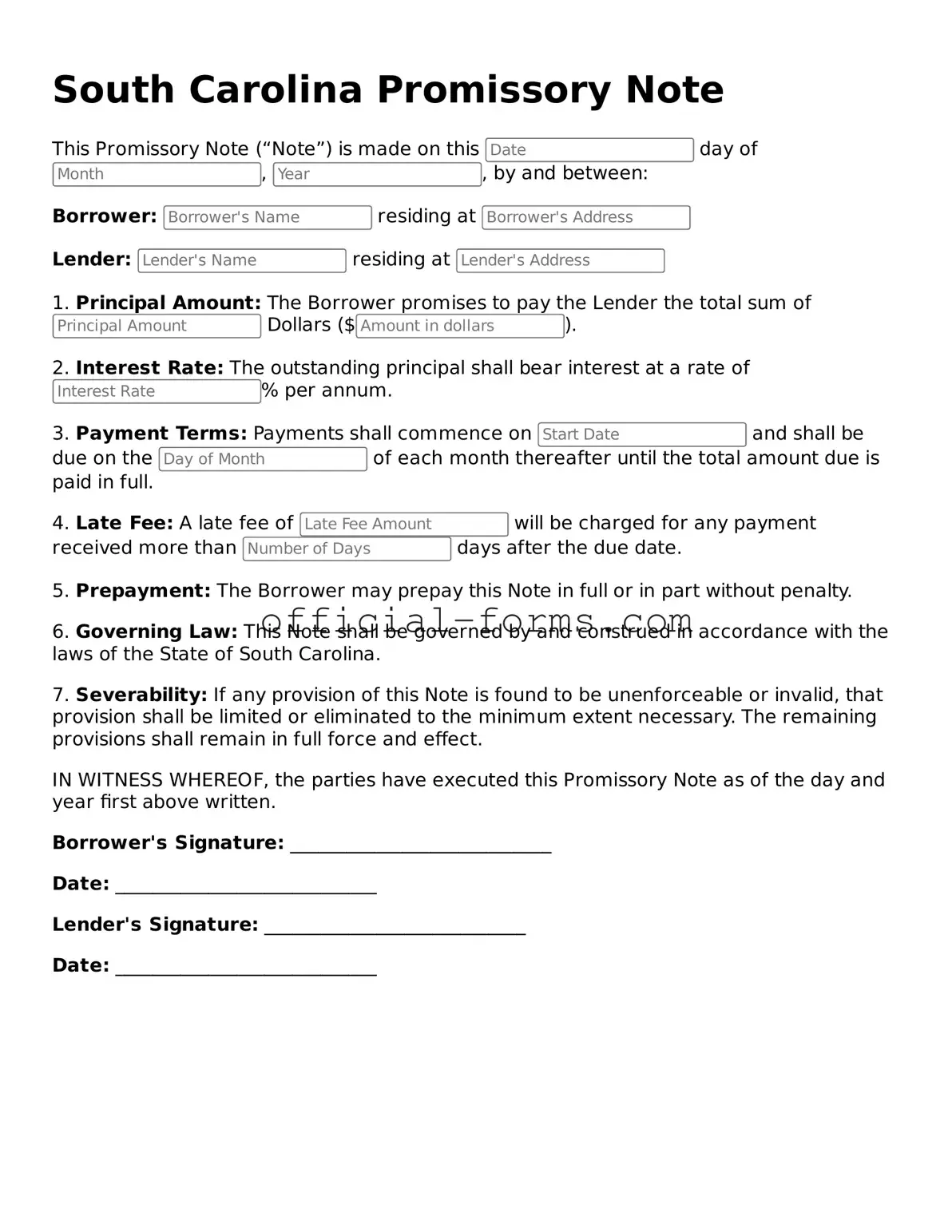Official South Carolina Promissory Note Document
A South Carolina Promissory Note is a legal document that outlines a borrower's promise to repay a specified amount of money to a lender under agreed-upon terms. This form serves as a record of the loan and details important information such as interest rates, payment schedules, and consequences for default. Understanding this document is essential for both borrowers and lenders to ensure a clear agreement and protect their rights.
Open My Promissory Note Now
